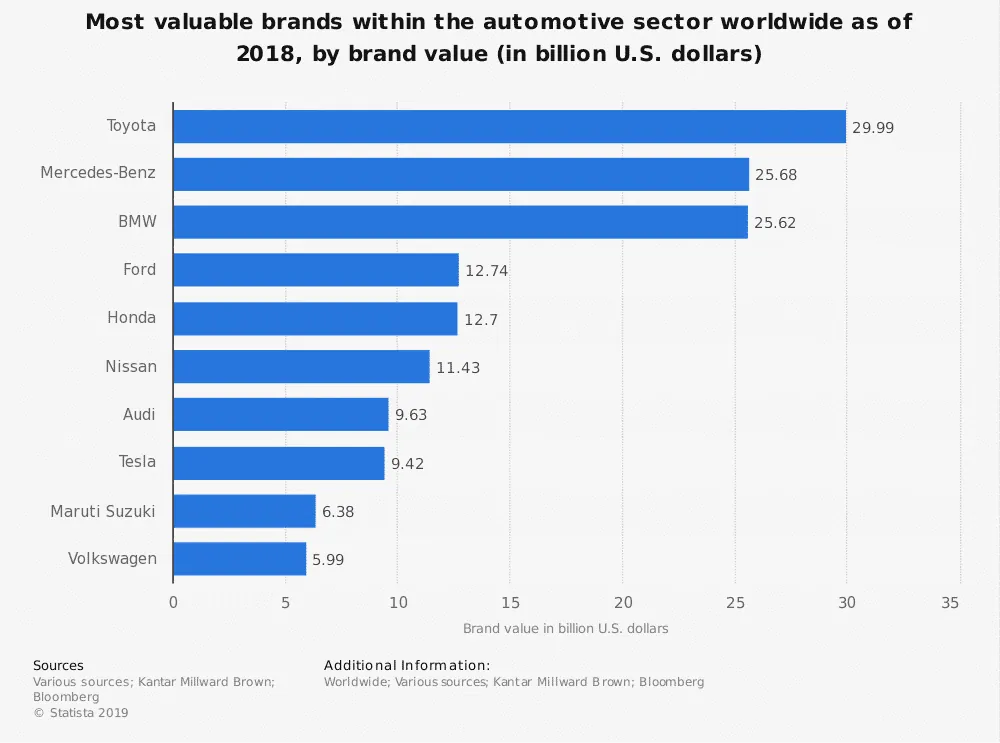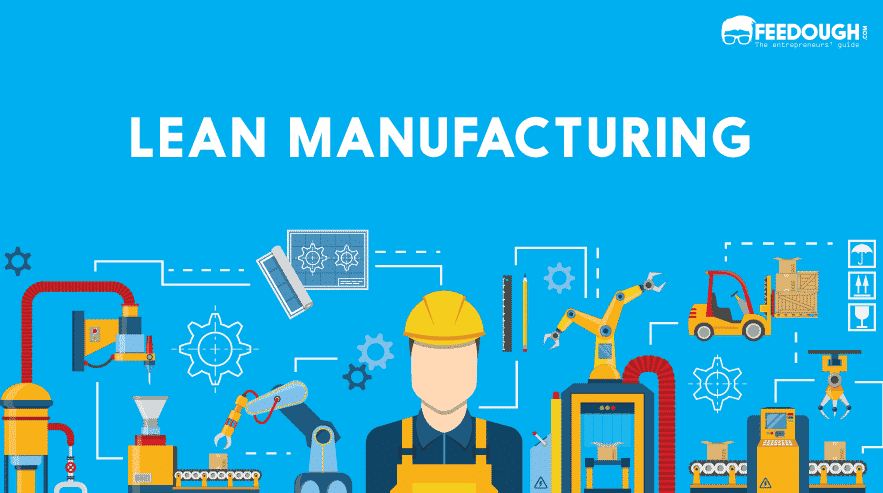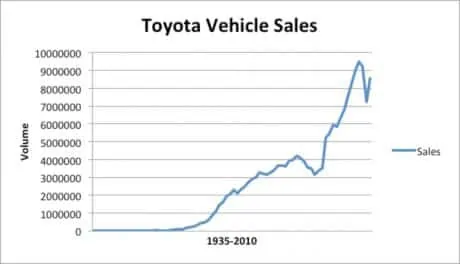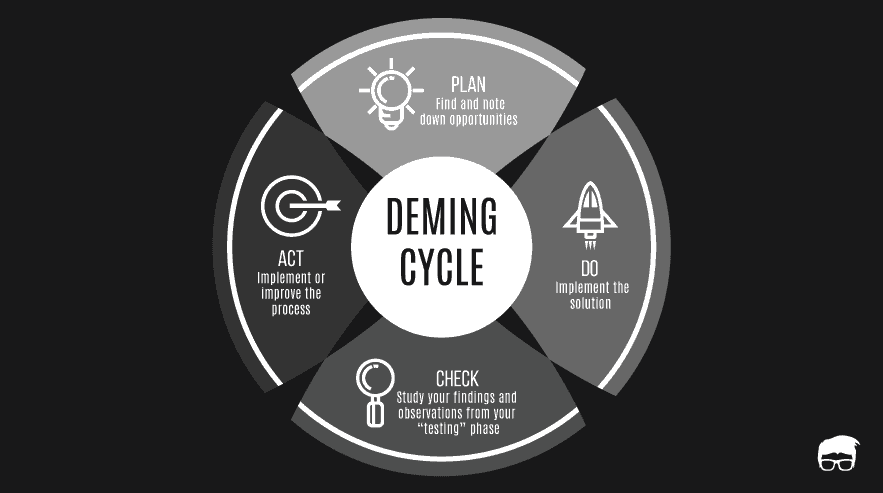If you are a manufacturer or an entrepreneur in the manufacturing business, you’d agree that the process of manufacturing involves a lot of waste and there are times you can’t just go away with some wastes.
You’d agree with me when I say wastes are an inseparable part of the manufacturing process.
…unless if you are someone who employs lean manufacturing.
What Is Lean Manufacturing?
Lean Manufacturing is a process where a systematic and organized method is applied to the production and manufacturing activities which lead to minimal wastage of resources and reduces costs without harming the productivity.
The Method aims to enhance productivity by simplifying the operational structure to the level where it is easy to understand, perform and manage the work territory.
This system of lean manufacturing was originally developed by Toyota Motors and was called the Toyota Production System. The effectiveness and the success which it brought attracted many other companies and the system is now used by thousands of manufacturing companies operating worldwide.
Toyota Production System
Toyota, founded in 1937 by Koichiro Toyoda, is the richest automobile company whose market capitalization is around $200 billion which is higher than any other automobile company.
The company achieved this feat by employing a completely new model and philosophy of manufacturing practice known as “Toyota Production System” – often called “lean” or Just in Time system of manufacturing.
This method mainly focuses on to eliminate the wastes and achieve the best possible efficiency there is, Toyota only manufacturers cars if there is an order.
TPS is loosely based on two primarily developed concepts which are jidoka and just-in-time.
- Jidoka: Jidoka is a Japanese word which means automation with a human touch focuses on methods where faults are quickly identified and corrected before it can create a problem to the production line.
- Just in Time: This process refers to the refinement and coordination of each production process so that the previous step only produces the item which is required by the successive step.
7 Wastes of Lean Manufacturing
Toyota has not only been able to increase its manufacturing efficiency but by removing the wastes in the manufacturing process, the company has been delivering the best products that are actually promised by them. This has made the company to top the charts of the most valuable automotive brand in the world.

But what exactly is a waste, you ask?
The simplest definition of waste is something that adds no value to the manufacturing process. It is a process, task, or an error that just adds more costs and increases the selling price of the product.
Here are the 7 wastes (mudas) lean manufacturing helps you to eliminate-
Transport
Transport is the movement of products (raw materials, work-in-process, or finished goods) from one place to another.
Usually, it is considered to be a necessary activity which neither can be replaced nor can it be ignored. But, according to the lean methodology, the process also includes unnecessary movement of products which amount to a lot of waste.
The causes of the increase in transportation waste are due to some given reasons:-
- Poor layouts
- Large distance between operations
- Lengthy, or complex material handling systems
- Large batch sizes
- Working to a faster rate than customer demand (overproduction)
- Multiple storage locations
Wastage coming from transport can be reduced if you –
- Design a linear and sequential flow from raw materials to finished goods
- Make sure work in progress doesn’t have to be kept in inventories or be transported to far of places
Inventory
Any product quantity in the form of raw materials, work-in-process, or finished goods that go beyond supporting the immediate need is a waste.
Excess inventory increases storage expenses which can be caused by –
- Lack of balance in workflow
- Large batch sizes
- Stagnant materials
- Incapable processes
Inventory wastage can be reduced if you –
- Produce, procure, or bring raw materials only when they are needed
- Reduce or eliminate buffers between the steps in the production
Motion
Motion waste refers to unnecessary movements of men and machines which do not add any value to the product.
Some of the reasons for wasteful motions are
- Poor workstation layout – excessive walking
- Poor method design
- transferring parts from one hand to another
- Poor workplace organisation
- Reorientation of materials
Motion waste can be reduced if you –
- Organise the work areas logically
- Place the equipment in a way which reduce unnecessary motion
Waiting
The stagnation or unnecessary waiting period for the next process to start or for the unsold products is considered to be a waste.
Wasteful stagnation is often caused by
- improper communication system
- unorganised processes
- non-standardised work instructions
The same can be reduced by –
- Designing processes to ensure a continuous flow and minimum buffer between steps in the production
- Use standardised work instructions to ensure that work is being carried out consistently at each step of the production
Overproduction
Producing something before it is actually needed is overproduction. It leads to increased inventory and eventually forms the root of other wastes as everyone has to accommodate this core waste.
Overproduction is a result of –
- Unvalidated assumptions about future orders.
- Excessive setup times which are not designed to manufacture smaller packages economically.
The same can be reduced by –
- Using a pull system to control the flow of goods within the factory as well as outside.
- Reducing setup time and upgrading technology to manufacture smaller packages economically.
- Aligning the pace of production with consumer demand.
Overprocessing
Adding more value to a product than the customer actually needs or demands is another waste that needs to be taken care of. It’s harder to detect overprocessing than to eliminate it.
The causes of this waste include –
- No proper market research
- Complex and non-standardised marketing processes
Overprocessing can be detected and eliminated if you –
- Focus more on what the customer actually buys your product for
- Look for ways to simplify the manufacturing process
Defects
When the products deviate from the specification, it leads to them categorized as defects. It is the most recognisable form of lean manufacturing wastes and can negatively affect the company financially and non-financially if they go undetected or get detected at the final stage.
Defects are caused because of-
- Non-standardized processes
- Fault in quality control
- No proper working instructions
The waste can be minimized by –
- Designing processes to minimize the occurrence of most frequent defects
- Designing processes to identify the defects as soon as they occur
- Looking for single most frequent defect and its cause
- Creating working instructions to work with caution during certain processes
Lean Manufacturing Principles
Lean manufacturing principles were originally published in 1996 based on the study of Toyota’s fabled Toyota Production System (TPS). According to a U.S. Bureau of Census survey, the more lean tools and principles a manufacturing facility adopted, the more it grew.
These principles focus on identifying what does and doesn’t add value to the customer and using the information to streamline the manufacturing processes and create improvements in productivity. Here are the 5 lean manufacturing principles which you need to follow to make your manufacturing process more effective and efficient.
- Identify Value: Think from the customer standpoint and specify the value which he is actually looking for. Conduct surveys, validate your assumptions and build what product and what features are actually required by the market.
- Map The Value Stream: After the product’s value has been identified, choose the system and process to deliver its value through the specific product. This principle of lean manufacturing focuses on eliminating all the steps, features, and other elements that do not add value to the process or create value for the customers.
- Create Flow: Once the wastes are removed, make sure that the product manufacturing processes flow (the movement of the value stream) is smooth enough and isn’t affected any interruptions, delays, or bottlenecks before reaching the customer.
- Establish Pull: After the flow is established, the focus should be on the “inventory” part of the production system as it can create a whole mess for the production line if not treated properly. In the lean manufacturing system, a product is only produced when it is needed and in just the quantities it is needed, in this way unwanted inventory and waste is terminated and the product produced satisfies customers’ needs.
- Seek perfection: Perfection can only be achieved if there is consistency in efforts. Lean is not a static system and it needs constant efforts and surveillance for perfection. Each and every element of the organization should be working in an order to implement perfection in its work.
Lean Manufacturing Examples
Toyota isn’t the only company benefiting by implementing lean manufacturing tools and principles, there are several other companies which have used the lean techniques to dominate their markets. Two such companies are Intel and Nike.
Intel
Today, the average chip in a laptop contains over 40 million transistors. Intel, the world’s best computer processor manufacturer, adopted lean manufacturing methodology to manufacture and bring a microchip to the factory from more than three months to less than 10 days.
Nike
Nike has adopted a very disciplined and methodical approach to manufacture its cutting-edge footwear. The company has two overarching goals or pillars:
- Make Today Better (Lean)
- Design the Future (Innovate)
Make Today Better is Nike’s lean manufacturing philosophy which is viewed as both a business system and a continuous improvement opportunity aimed at producing the highest quality product by eliminating all possible wastes. Employees are trained for enforcing teamwork and the problems are usually solved by employee closest to that problem.
Design the future philosophy is essential for the company to remain at the top of the market by enforcing sustainable innovation capabilities across the business to drive a disruptive innovation agenda.
Go On, Tell Us What You Think!
Did we miss something? Come on! Tell us what you think about our article on lean manufacturing in the comments section.
A startup consultant, digital marketer, traveller, and philomath. Aashish has worked with over 20 startups and successfully helped them ideate, raise money, and succeed. When not working, he can be found hiking, camping, and stargazing.









